I attach a zip archive with all the files needed to illustrate and reproduce the problem.
(I don't have permissions to upload images yet...)
I have an image (test2.png in the zip archive ) with curved lines.
I try to warp it so the lines are straight. I thought of using scikit-image transform, and in particular transform.PolynomialTransform because the transformation involves high order distortions.
So first I measure the precise position of each line at regular intervals in x to define the input interest points (in the file source_test2.csv). Then I compute the corresponding desired positions, located along a straight line (in the file destination_test2.csv).
The figure correspondence.png shows how it looks like.
Next, I simply call transform.PolynomialTransform() using a polynomial of order 3. It finds a solution, but when I apply it using transform.warp(), the result is crazy, as illustrated in the file Crazy_Warped.png
Anybody can tell what I am doing wrong? I tried polynomial of order 2 without luck... I managed to get a good transformation for a sub-image (the first 400 columns only). Is transform.PolynomialTransform() completely unstable in a case like mine?
Here is the entire code:
import numpy as np
import matplotlib.pyplot as plt
import asciitable
import matplotlib.pylab as pylab
from skimage import io, transform
# read image
orig=io.imread("test2.png",as_grey=True)
# read tables with reference points and their desired transformed positions
source=asciitable.read("source_test2.csv")
destination=asciitable.read("destination_test2.csv")
# format as numpy.arrays as required by scikit-image
# (need to add 1 because I started to count positions from 0...)
source=np.column_stack((source["x"]+1,source["y"]+1))
destination=np.column_stack((destination["x"]+1,destination["y"]+1))
# Plot
plt.imshow(orig, cmap='gray', interpolation='nearest')
plt.plot(source[:,0],source[:,1],'+r')
plt.plot(destination[:,0],destination[:,1],'+b')
plt.xlim(0,orig.shape[1])
plt.ylim(0,orig.shape[0])
# Compute the transformation
t = transform.PolynomialTransform()
t.estimate(destination,source,3)
# Warping the image
img_warped = transform.warp(orig, t, order=2, mode='constant',cval=float('nan'))
# Show the result
plt.imshow(img_warped, cmap='gray', interpolation='nearest')
plt.plot(source[:,0],source[:,1],'+r')
plt.plot(destination[:,0],destination[:,1],'+b')
plt.xlim(0,img_warped.shape[1])
plt.ylim(0,img_warped.shape[0])
# Save as a file
io.imsave("warped.png",img_warped)
Thanks in advance!


